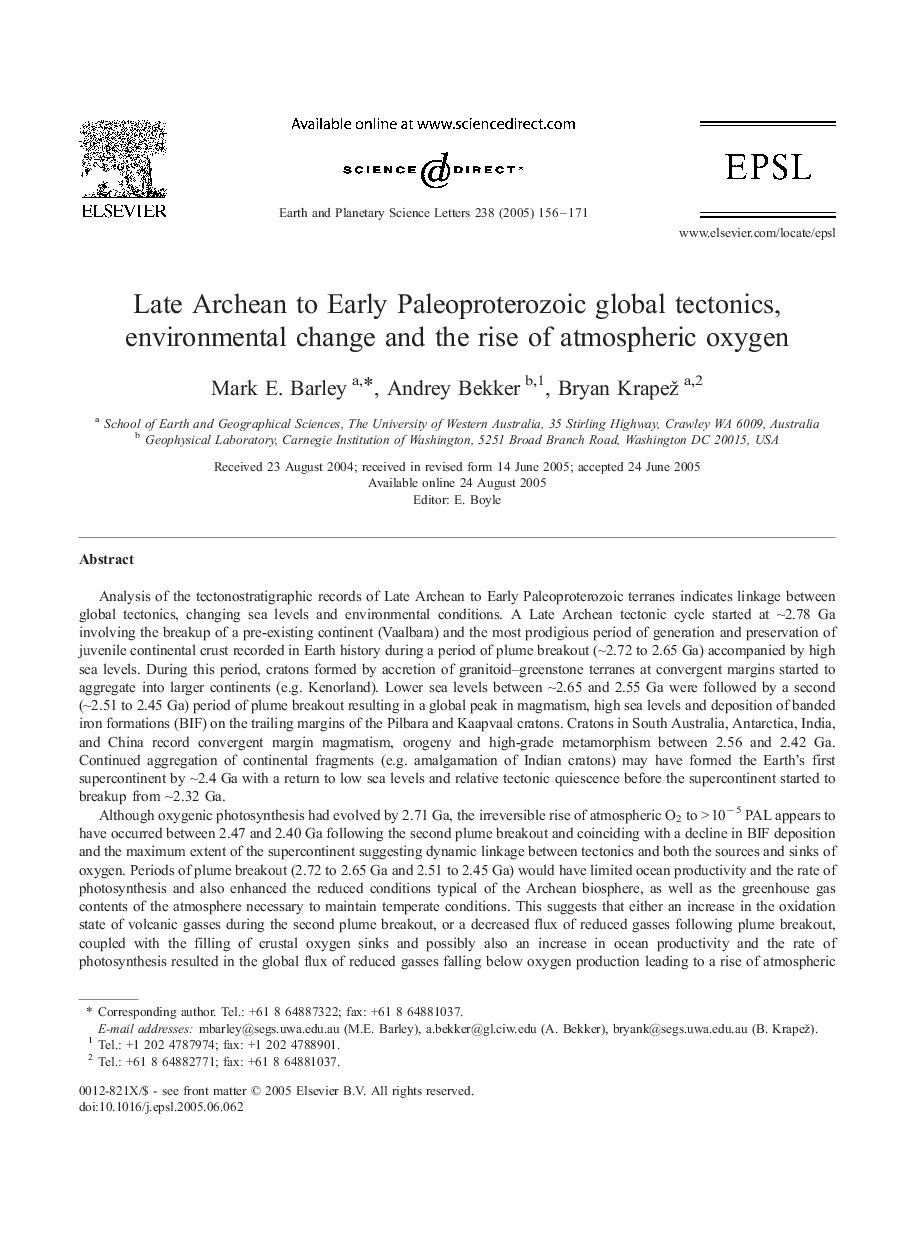| Article ID | Journal | Published Year | Pages | File Type |
|---|---|---|---|---|
| 9522094 | Earth and Planetary Science Letters | 2005 | 16 Pages |
Abstract
Although oxygenic photosynthesis had evolved by 2.71 Ga, the irreversible rise of atmospheric O2 to > 10â 5 PAL appears to have occurred between 2.47 and 2.40 Ga following the second plume breakout and coinciding with a decline in BIF deposition and the maximum extent of the supercontinent suggesting dynamic linkage between tectonics and both the sources and sinks of oxygen. Periods of plume breakout (2.72 to 2.65 Ga and 2.51 to 2.45 Ga) would have limited ocean productivity and the rate of photosynthesis and also enhanced the reduced conditions typical of the Archean biosphere, as well as the greenhouse gas contents of the atmosphere necessary to maintain temperate conditions. This suggests that either an increase in the oxidation state of volcanic gasses during the second plume breakout, or a decreased flux of reduced gasses following plume breakout, coupled with the filling of crustal oxygen sinks and possibly also an increase in ocean productivity and the rate of photosynthesis resulted in the global flux of reduced gasses falling below oxygen production leading to a rise of atmospheric O2 accompanied by loss of the CH4-rich greenhouse atmosphere resulting in the Earth's first widespread glaciation. Detrital pyrite and uraninite in 2.45 to 2.40 Ga sediments suggests that terrestrial surface environments were not yet extensively oxidized. The oldest evidence of extensive oxidative weathering is associated with 2.32 to 2.22 Ga glacial deposits and breakup of the supercontinent.
Related Topics
Physical Sciences and Engineering
Earth and Planetary Sciences
Earth and Planetary Sciences (General)
Authors
Mark E. Barley, Andrey Bekker, Bryan Krapež,
